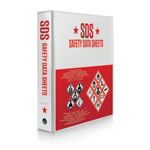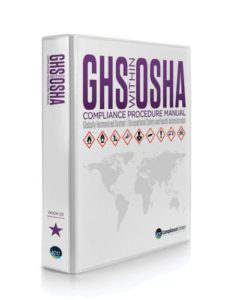This post was originally published in March 2017 and has been updated in May 2022 for accuracy.
Safety Data Sheets Defend Your Employees
Chemical Safety in the workplace can be a topic most employers would like to avoid. However, not only is it vital to the employee’s and community’s wellbeing, it is a requirement by law. In comes Safety Data Sheets (SDS) to the rescue! If Chemical safety in the workplace was a hockey team, training, storage requirements, purchasing, disposal, and inventory requirements would make up the Center, Forwards, and Defense, leaving the cornerstone of any hockey team, the Goalie to represent Safety Data Sheets (SDS). OSHA Standard 1910.1200 (g)(8) states that The employer shall maintain in the workplace copies of the required safety data sheets for each hazardous chemical, and shall ensure that they are readily accessible during each work shift to employees when they are in their work area(s). However without correct understanding of Safety Data Sheets, it would be like having an injured goalie in your starting lineup. Below are some tips for reading a 16-section format SDS.
Section 1. Identification:
Identifies the chemical on the SDS and displays the recommended uses. This section also provides contact information of the manufacturer as well as an emergency phone number.
Section 2. Hazard Identification:
The purpose of this section is to identify various hazards the chemical presents as well as any warning information. This includes Hazard class, signal words, pictograms and hazard statements.
Section 3. Composition/Information on Ingredients:
Displays the ingredients contained in the product. It gives the concentration of each ingredient that is classified as a health hazard.
Section 4. First Aid Measures:
Describes any first aid that should be given by untrained responders if there is exposure to the chemical. This includes symptoms and recommended immediate medical care.
Section 5: Fire-Fighting Measures:
Gives recommendations of how to handle a fire that is caused by this chemical. This includes extinguishing equipment, protective equipment, and information on other hazards that can arise if the chemical burns.
Section 6: Accidental Release Measures:
Lays out the recommended response to spills, leaks, or releases of the chemical. This includes cleanup practices, emergency procedures for evacuation, protective equipment, and spill volume.
Section 7: Handling and Storage:
Outlines the procedure for safe storage of the chemical. This includes ventilation requirements if applicable.
Section 8: Exposure Controls/Personal Protection:
Recommends the specific types of personal protection such as gloves, respirators, or glasses when using the chemical referenced in the SDS.
Section 9: Physical and Chemical Properties:
This section identifies the appearance, odor, density, flammability or explosive limits, as well as other physical properties of the chemical.
Section 10: Stability and Reactivity:
Breaks down the different reactive hazards of the chemical and stability information. This includes an indication of whether the chemical will react in certain situations such as pressure or temperature change, as well as any safety issues that may arise if the product changes in physical appearance. There is also a description of specific test data for the chemical.
Section 11: Toxicological Information:
Identifies any information about immediate or chronic health effects that may arise from exposure to the chemical. This also includes symptoms of exposure from lowest to most severe.
Section 12: Ecological Information:
This section measures the impact the chemical has on the environment if it were released. This includes test results if available.
Section 13: Disposal Considerations:
Provides information on how to properly dispose of the chemical as well as safe handling practices.
Section 14: Transport Information:
Provides guidance on classification information for shipping and transporting by ground, air, or sea. This includes UN number, proper shipping name, and hazard class.
Section 15: Regulatory Information:
Displays the specific regulations for the product not indicated anywhere else on the SDS.
Section 16: Other Information:
Indicates when the SDS was created and the level of revision. This section states where the changes have been made to the previous version.
As always, if you have any questions regarding SDS Services contact ICC Compliance Center at 1.888.442.9628 (USA) or 1.888.977.4834 (Canada).
Source: https://www.osha.gov/Publications/OSHA3514.html
Stay up to date and sign up for our newsletter!
We have all the products, services and training you need to ensure your staff is properly trained and informed.
 Regulatory and Hazard Communication Services |
 GHS within OSHA 29 CFR 1910 General Industry Regulations Compliance Procedure Manual |
 OSHA / WHMIS / GHS Training Courses |







 ICC USA
ICC USA ICC Canada
ICC Canada